Shane Smith
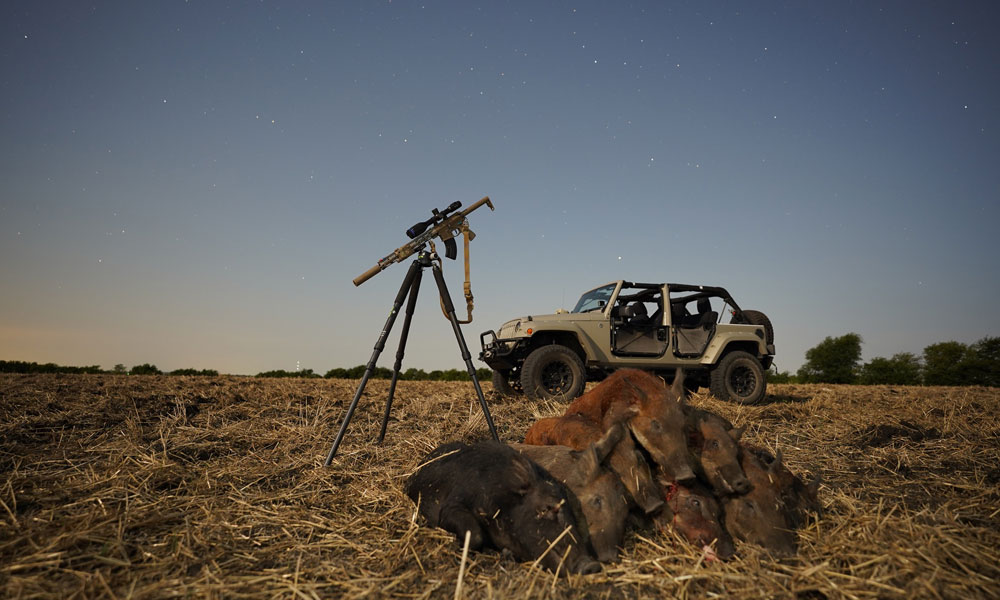
The feral hog has become more than just a nuisance for landowners that have had their property ravaged by these wild beasts. Most southern states such as Texas, Oklahoma, Arkansas, Louisiana, Mississippi, Alabama, Georgia and Florida all have a feral hog problem. In vain attempts to reduce hog numbers, landowners would simply shoot at hogs when the opportunity would arise. As the hog numbers continued to rise, landowners needed a better solution to allow them to hunt these animals when the sun was down and the moon was up. That solution was a thermal, weapon-mounted scope.
A decade ago thermal scopes were in their infancy and were extremely expensive. So most hunters opted for “night vision” optics which don’t show heat, but rather an image that is manageable but fairly distorted.
Now, you can get in the thermal game for much less money than in the past. They are still not cheap by any stretch of the imagination, however, it has become much more affordable to most end users.
So, you want to thermal hog hunt? Please read on as I dive into the nuts and bolts of some must-have items.
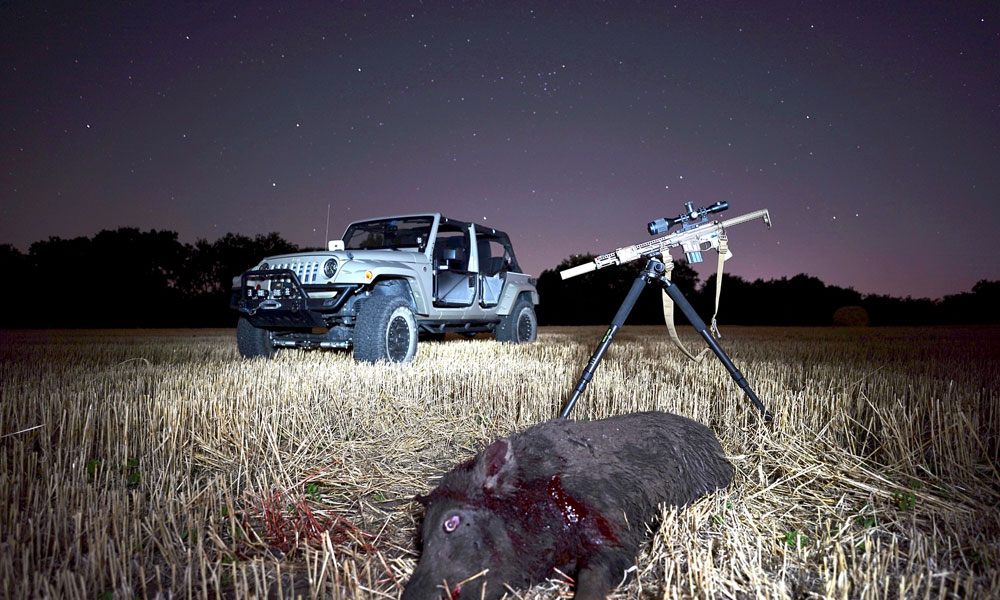
1. Quality Thermal Scope
This is going to be the bulk of your investment when you are first getting in the game. I asked Matt, who is a good friend of mine who is a thermal weapon guru what I could get for under $2,000. He simply replied, “nothing worth wasting your money on.” He rather pointed me in the $2,500-$4,000 range and boy oh boy am I glad I saved a bit longer and listened. My first optic was a PULSAR Thermion XQ50. I am not going to get into microns and pixels in this segment. But it retails for $3,500 and I am super happy with this purchase. My second thermal scope is a Bering Optics Hogster 35mm. It retails for $2,600 and has a few less features than the Pulsar, but is by far the best bang for the buck out there in my opinion. If these dollar amounts are still out of your range, then consider splitting it with a family member or a trusted friend. That is what my father and I did on the first optic.
2. AR Platform Weapon
I prefer an AR platform whether it is an AR10 or AR15 due to the fact it is dependable, easy to operate and has much higher magazine capabilities than a bolt gun. I prefer calibers like 6.5 Creedmoor, .308, 6.5 Grendel, 6.8 SPC, 6mm ARC and 7.62X39. Too many times I see guys who grab their trusty AR15 chambered in 5.56 and think they are ready to go. I personally don’t care for 5.56 when it comes to cleanly killing hogs at night with a thermal scope. Especially if you are shooting FMJ rounds. A 40-grain FMJ is not a very desirable load to cleanly dispatch thick-skinned game like wild hogs. If you do opt to keep your 5.56 as your thermal weapon, please purchase a quality round such as a Nosler, Barnes or Hornady in a higher grain.
3. Place to Go
Once you have acquired a quality optic and have it mounted on your AR platform, you will need a place to go hunting! Most farmers will gladly let you thermal hog hunt their property. Places to target are agriculture fields, cattle/feed lots, open pastures or any area with low grass and plenty of pigs. Once you locate a spot to hunt and take the first shot, the hogs will squeal and scatter in all directions. That being said, we as responsible hunters need to be mindful of our surroundings for things such as houses, livestock, pets and any other thing that isn’t our intended target.
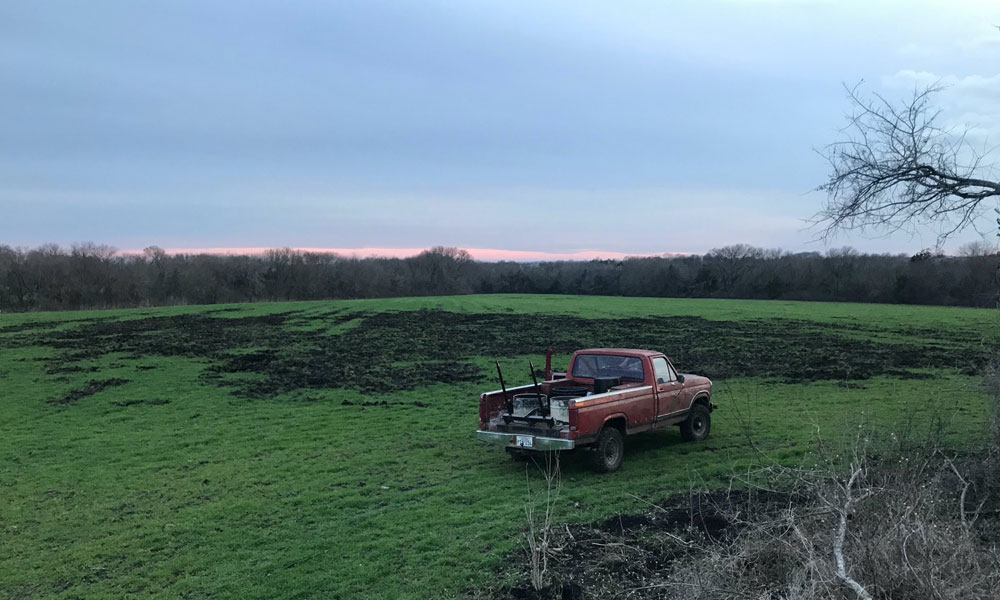
4. Let People Know
The landowner needs to know that they will be hearing gunfire in the dead of night and to not call the game warden or police! If applicable, you might want to let the neighboring property owner know as well. In doing so, you may very well acquire another thermal hog hunting location.
5. Know Your Target
A thermal scope simply shows HEAT. At 400 yards, you can’t really tell a deer from a hog. Do your best to get closer to positively identify your target. If you aren’t sure, don’t send the round down range.
6. Play the Wind
We will try and ride a levee or field edge to scan as much real estate as possible without disturbing the area. Once you spot some hogs and decide on your approach, ALWAYS check the wind. Hogs can’t see very well at night, but can still smell us a long ways away.
7. Shooting Stick
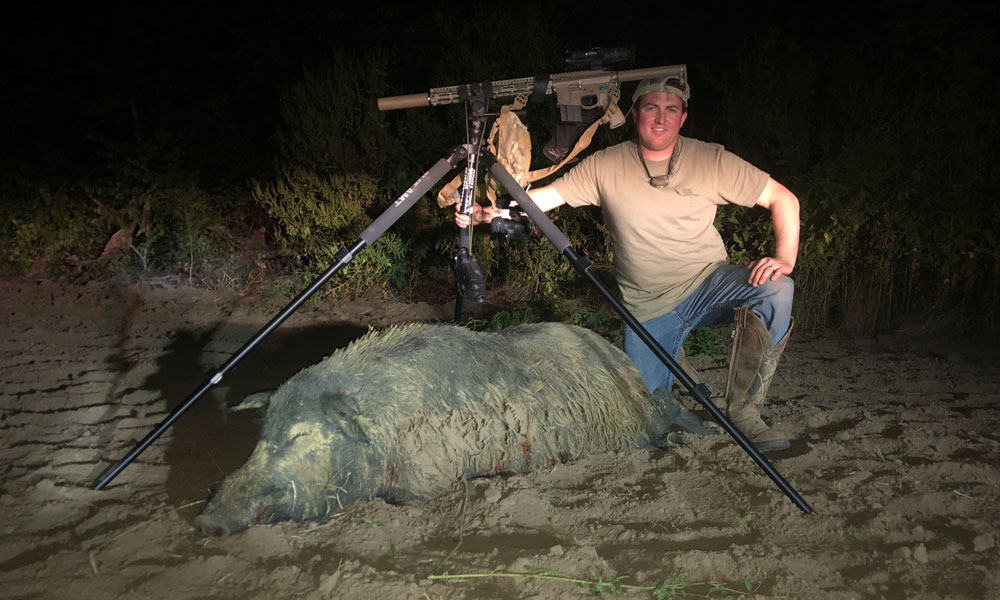
I prefer to spot the hogs from a side-by-side or a truck then get out to get within less than yards of them. You will kill far more pigs with a stable shooting platform than trying to go full commando. You can spend as much as you want here, but I opted for the $140 Primos Trigger Stick. Another popular option is a BOG POD. But they retail for around $300.
8. Blackout
I try and bring an old blanket or something to cover the instrument panel on my side-by-side or truck. You are going to be looking through the thermal scope and you don’t need any outside light sources messing with your vision. If you can turn off your running lights as well when you are in an area, that will allow you to drive safely.
One last bit of advice is to buy a suppressor. Yes, they are expensive and take 8-12 months to acquire. But they are well worth the investment as your ears and neighbors will thank you. If you are in a side-by-side and you and your battle buddy start dumping rounds like Halloween candy out of a bucket, your ears will be ringing like nobody’s business.
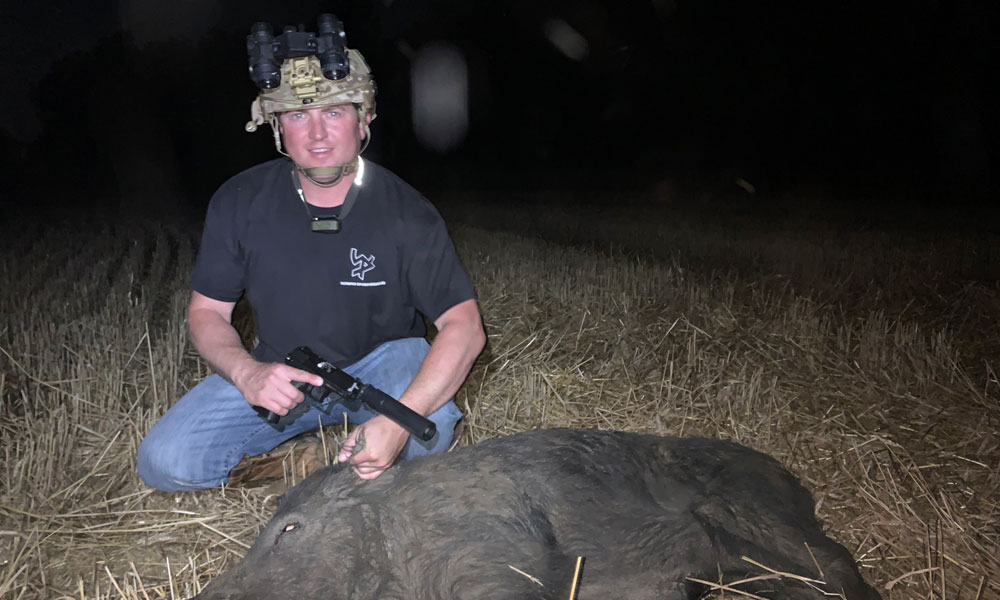
You have already invested a significant amount of money, if possible add a suppressor to your weapon and you will be glad you did.
Thermal hog hunting is becoming more and more popular and is here to stay. Thermal hog hunting is great way to get out after the sun goes down and burn some powder. It is super cool to see the amount of animals that are moving about when it is pitch black. It is a lot more fun when two people have thermal optics and can really pile up some hogs in a single engagement! There are tons of hog hunting resources out there to get advice from. I will list them and some links down below. Get out there and turn on your thermal and see what you have been missing!






























